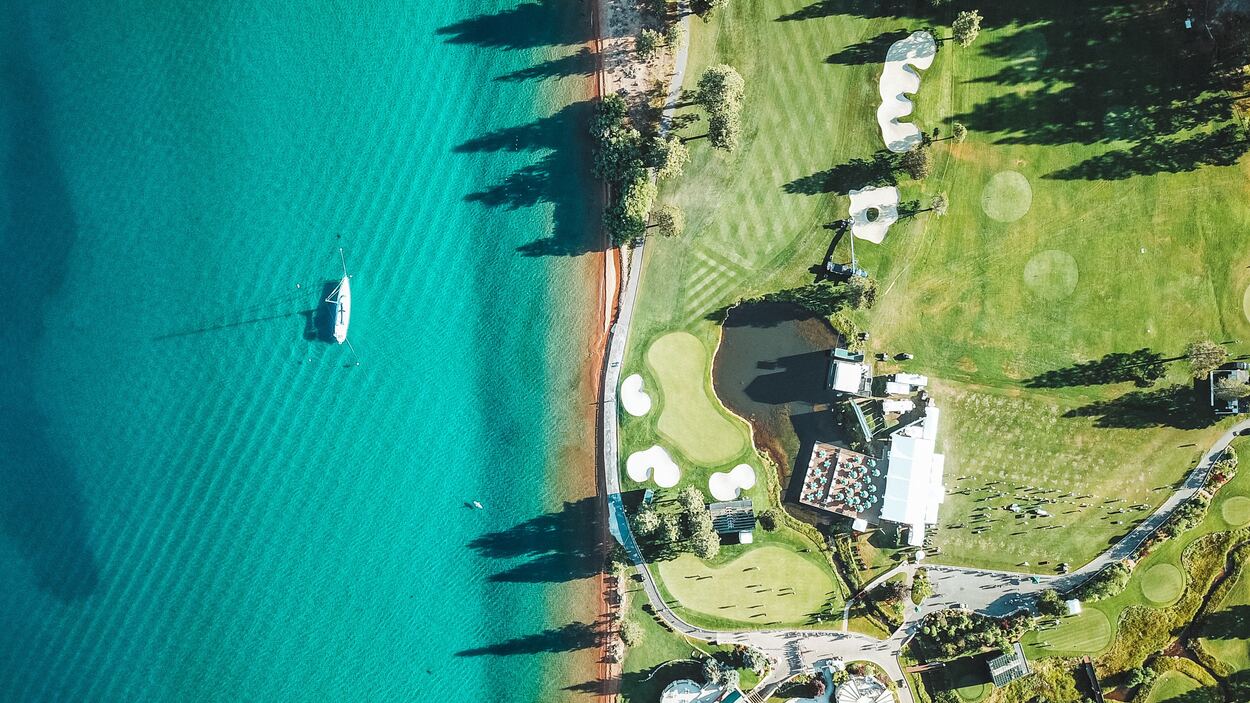How to Design A Golf Course (Top Secret)
One of the best things about golfing is the scenery and design. There have been many occasions when I just felt that the course I was playing was designed poorly, even if it wasn’t accurate.
So, after my last golf outing, I decided to educate myself on designing a golf course.
Everyone who’s involved in the designing of a golf course would have to analyze the wind, water, and soil to avoid any negative environmental effects. And then design the visual with this in mind.
But let’s dive deeper. What else is required?
Well, in this article, we will tackle some specifics on how to get the most out of your dream to create and detail a specific design for a great course.
How Do You Build a Golf Course?
With the help of the right architecture and engineering. Golf course architecture is not my strong suit, but there are a few things to keep in mind:
- Golf Should be fun
- Work Backwards
- Allow for Recovery
- Don’t hide trouble.
- Design for a pro and amateur
Keeping these principles in mind will help design a course that people will WANT to play on.

of Callaway ERC Triple
Track Golf Balls for
yourself or your buddy!
What Makes A Great Golf Course Design?
Unless you are a golf course architect, you may not be able to visualize an entire 18 holes in your head. But since we have the principles laid out, let’s get more granular and start drawing the course on paper.
One of the main things to keep in mind is “working backward,” so let’s break down building a single hole backward.
The Green
The first thing to do is identify where a green will be placed. This is very important as it will dictate how much additional work is needed to lay out the course.
In order to build a good green, you need to consider the slope of the land and the type of terrain. A golf course in the desert of Las Vegas would be much different from a golf course green designed on the side of the Appalachian Mountains.
Don’t be cruel. I have been on many courses where a single hole just seems impossible for no reason at all.
Don’t forget our principle of making a course balance the talent levels of a professional to the “average player” levels of a, well, average player.
As we will talk about later, water draining is a big thing as well.
Ensure, especially on the green, that you can properly drain the waterfall to keep the greens dry.

The Fairway
The fairways should be laid out to maximize space but not too narrow to make the shot on the fairway impossible.
It must also lead up very cleanly to the green. This helps with approaches and recoveries.
The closer you get to the green from the fairway, the less forgiving the hole should be. That is because the penalty for being inaccurate increases dramatically.
You should reward straight shots, but add elements of “thinking” that require someone with a 300+ yard drive to perhaps think twice when there is a dogleg left 250 yards away.
For me, a typical drive can go about 200 to 230 yards. So a hazard at 250 yards away wouldn’t even affect my decision-making.
The Tee Box
This is where it all begins.
The teeing ground should be similar to the green in terms of terrain. Something flat and well-manicured.
Once a spot for the tee box is chosen, take a second and look up toward the green.
- Is it obstructed?
- Are trees or other natural features in the way?
- Is it aesthetically pleasing to the eye?
Remember, any hazards should be in plain view for accurate assessment for the golfer on how to attack a hole.
This is also a place where you will decide on the Pro, Men, Seniors, and Ladies tee boxes.
Obviously, each will have varying distances to the hole.
The Rough
So now that we have the green, fairway, and tee box laid out, it’s time to figure out where to put the rough stuff.
Since the fairway will be well manicured, the rough will be a little higher, and as you get farther and farther out, the rough gets higher and higher.
This is where you will need also to determine out-of-bounds markers, drop zones for major hazards like large rough or water, and distance away from the golf holes that will be right next door.
Most courses have a “serpentine” feel to them, where the green of one hole leads to the tee box of another. That also makes it easier for golfers simply to know where to go next.
The Hazards
This is the fun part of building a course. Different ways to make it challenging.
In most instances, your common hazards would be trees, sand trap bunkers, and water.
Find a way to reward good decision-making. What I mean by this is if someone who shoots 300+ yards wants to try to get a shot over a water hazard that is at about 200 yards, make them decide if that chance is warranted. If they do not get off the perfect shot, the ball will take a dip, and a penalty shot will be awarded.
The cool thing about hazards is that you can place them anywhere. Some are more expensive than others, but you can add in a man-made lake just to increase the difficulty of a hole.
How Are Golf Courses Made?
The golf course is all about the grass. It really differentiates a good practice from a bad system.
Nothing is worse than getting to a course, and it’s yellow, and the grass is burned, dirt spots, no improvements or revisions… it isn’t lovely.
In fact, that is what will turn me off from a golf course the fastest, and not want to come back. The condition of the course is everything. So how are the courses made? With four distinct factors.
Topsoil
Topsoil is essential to making sure a course thrives. It’s the very foundation of what you will eventually walk on.
Lush greens that can take a pounding from carts and humans are required to create a breathtaking view when on the course. It all comes from the quality of the topsoil.
Hills and Dips
Most of the hills and dips you may see on a course are natural.
But they can be manmade, too.
Imagine when you hit a shot just for it to disappear over the ridge, turning into a blind shot. Hills and dips will increase the handicap, making it a harder hole to conquer.
Drainage
Now, drainage is a biggie. Without proper drainage, nothing works well on a golf course.
I was driving on a course yesterday and got stuck in a spot on the fairway. But get this, it hadn’t rained for almost a week. So, there was definitely a drainage issue.
But this includes walking around as well. I wouldn’t say I like it when a course doesn’t drain well, and then as a result, I get wet socks. Not a good feeling to have for the rest of the round.
Drainage is important for the greens as well. A wet green causes slower speeds for the ball and is just annoying to play on.
Healthy Grass
This goes along with the topsoil to an extent, but it is also a big reason a good course can be great.
I associate maintaining healthy grass with playing defense in basketball.
It just takes effort.
A shotty course will look plain ugly, and maintaining beauty is part of what you pay for when playing a round. It has to be calming in, not anxiety-inducing.

and apparel.
gear, accessories and apparel. (affiliate link)
How Is Par On A Golf Course Determined?

All the things I mentioned above go into making a great course. But what about determining the strokes?
An 18-hole course has a 72 par. So using that as a framework will help reverse engineer the numbers of par 4, 5, and 3 holes you will need.
For more information about Par 3, read here: What Golf Clubs Do I Need For A Par 3?
Of the 18 golf holes, each one needs to be assessed a handicap of 1 to 18. This helps the handicap metric to be calculated.
It can even help golfers determine how to attack a hole, knowing that it may or may not be the hardest hole on the course.
Par is typically determined by the measurement of the distance between the tee box and the hole and the average distance a good golfer should be able to reach the green and 2-putt.
Par 4’s are the most common, but a hole or two at Meadow Farms is a Par 6. There is even a Par 7 in South Korea!
How Much Does It Cost To Build A Golf Course?
This is a loaded question.
Typically, a golf course can put you in the hole anywhere from $4 to 20 million dollars. (yikes)
But so much goes into building (and maintaining) a course.
You have to consider:
- Buying a piece of land itself
- The clubhouse property
- Maintenance facility
- Permits
- Finance charges if you plan on borrowing money
- Architecture fees
- Golf course superintendents and maintenance staff
- Contractors
Sheesh!
My wallet just shrunk a little thinking about it. Now paying that $40 a round doesn’t seem so bad (just kidding, it still does.)
What Skills are Needed to be a Golf Course Designer?
You need to finish a Bachelor’s degree in landscape architecture or at least a course in a related field that tackles engineering and construction. Aside from that you need 3-5 years of experience in computer-aided design (CAD) software.
In addition to that, you need the following soft skills:
| Creativity |
| Problem-Solving |
| Communication |
| Teamwork |
| Strategic Thinking |
| Critical Thinking |
Conclusion
In conclusion, golf architecture is undoubtedly a difficult task that takes a lot of time, effort, and a truckload of money. We can’t be Jack Nicklaus designing the next latest and greatest modern courses, after all.
There are many things to consider when creating a course, from the layout of the holes to the landscaping and maintenance. By following these tips, you can create a course that is both challenging and enjoyable for golfers of all skill levels.
But if your goal is to further appreciate the greatness that goes into golf course maintenance when you are out there on the links, then you are all set.
Check out my other article How Many Rounds of Golf Are Played Daily?



